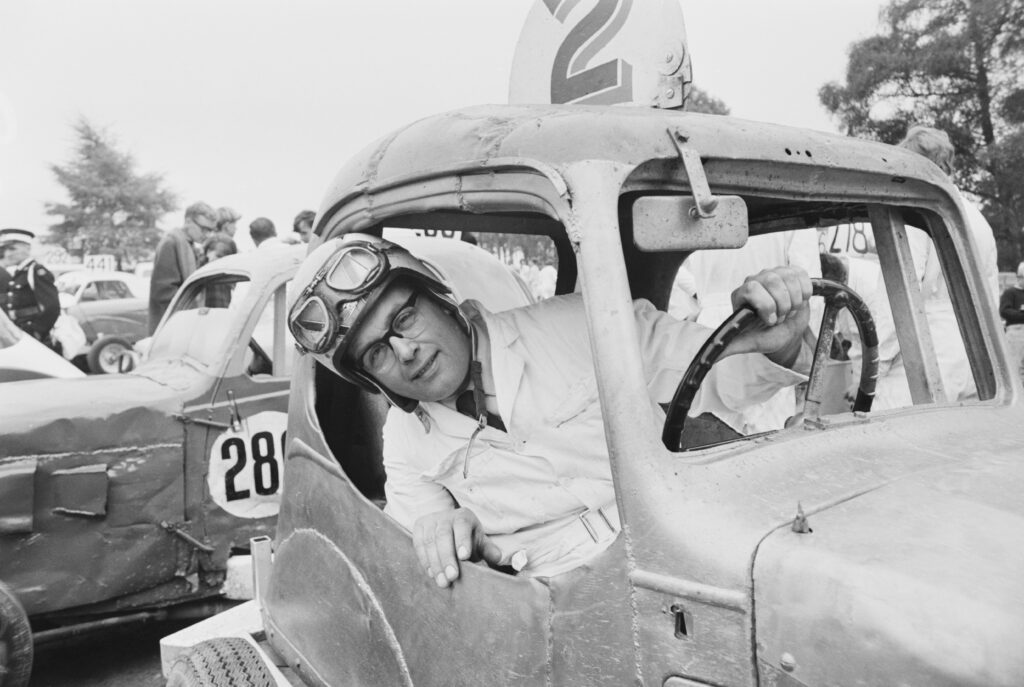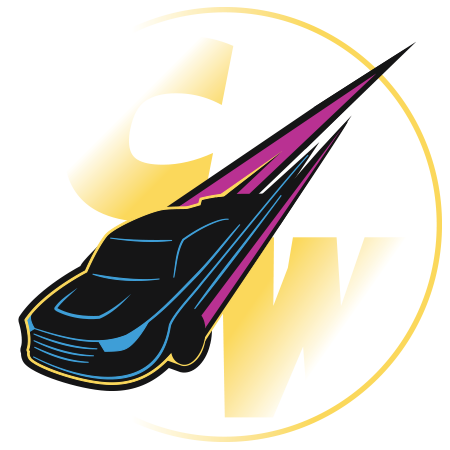NASCAR team haulers have become a staple when it comes to traveling to and from any given NASCAR track. In fact, it has become so commonplace that weekly hauler parades are put on each weekend as the teams head to the racetrack. These parades are a spectacle for many race fans, indicating to them that NASCAR has arrived in town and that the race weekend is about to begin.
But did you know that before there were hauler parades, haulers were considered optional and sometimes even considered a luxury way to travel? How did NASCAR haulers get their start in NASCAR, and who was the mastermind behind it all? Let’s go over the rich history of NASCAR haulers and their presence (and purpose) in the sport!
In the video below, provided by the YouTube channel grassrootsNASCARracing, our host, Scott shows off this vintage Petty Enterprise’s racecar hauler that started it all. Check it out!
When NASCAR was founded in 1948, trailers used to transport racecars to and from the track weren’t even a consideration. This is largely due to the fact that NASCAR racecars back then were literal street stock cars with numbers (and sometimes sponsors) painted on the sides. NASCAR drivers simply drove their street cars to and from the track and competed. Even in the earliest of NASCAR days in a series now known as the Wheelen Modified Series, competitors drove their souped-up hot rods to the track, regardless of their alterations.
As NASCAR grew in popularity and started to expand all over the country, driving cars to and from the track quickly became unfeasible. For one thing, all that travel racked up a lot of miles on the car’s engine and parts. Even in the early days of NASCAR, races were run as far north as Pennsylvania and New Jersey. Most drivers lived in or around the Charlotte, North Carolina racing “hub.” So, in order to get to the track, they’d have to drive their racecars all that way, compete, and then drive it either to the next track or all the way back home.
Another issue early teams ran into was damaged racecars. Imagine you were competing in a race in 1950. You drove all the way to New Jersey to compete, and you crashed out. You absolutely total your car. It’s unsalvageable. As you can imagine, it would be extremely difficult to get a crashed racecar all the way back down to North Carolina.
So, a fix was needed, and a certain King of NASCAR ushered in the concept of using haulers and trailers to transport their cars to and from any racing facility.

When drivers and teams decided that driving their prepared racecars to and from the racetrack was no longer feasible, they started looking into alternative ways to transport their cars. Initially, this meant hooking a flatbed trailer onto the back of a pickup truck and getting their cars to the track that way. This later evolved into a box truck and trailer kind of rig. A designated truck driver would wheel a big box truck (think modern-day U-Hauls) with a trailer attached to the back to carry the car. Amongst the first teams to transition to this means of transportation was none other than Petty Enterprises.
As you saw in the video above, these trucks were completely modern and innovative for the time. They were installed with fans for cooling, radios for communication, and even a bed for the truck driver to sleep in if he was traveling cross country. This cut down on the team’s cost of staying in hotels between tracks. The “box” part of the truck was fitted with the various supplies a team might need on any given race weekend. It contained spare parts and pieces, toolboxes, and pit stall supplies such as signs.
Richard Petty and his family company were largely responsible for steering these innovations. He had the mindset that if a car were driven less on the actual street, it would hold up better on the track during grueling race weekends. After that, NASCAR haulers morphed into something more convenient and comfortable, such as the box truck in the video above. But that’s not where the story of NASCAR haulers and their transformation ends. There are a couple of other big innovators to discuss en route to how we now picture NASCAR haulers starting with Bud Moore.

NASCAR Hall of Famer Bud Moore was certainly a true innovator, not only as a racer himself and team owner on the competition side but also in terms of the practicality of NASCAR haulers. Moore is credited as being the first team owner to bring a fully enclosed and converted trailer to the racetrack. He started this practice when he showed up for Daytona Speedweeks in 1982. With his hauler, Moore laid out the blueprint for what a NASCAR hauler could be.
One of the primary features included on his hauler was a fully enclosed trailer. This protected the car from other damage it could pick up en route to the racetrack, such as weather and other unforeseen incidents. In his hauler, he had everything that one might need in any given race weekend, from spare parts to even a backup car in the event that the primary got crashed in practice and qualifying. He took the innovation of Petty Enterprises and basically moved his whole operation, including the car, in-house, so to speak.
Once other team owners got a whiff of what Bud Moore was doing with his haulers, they all wanted to move in that direction. NASCAR haulers as a whole started to grow in size and expand. As with anything, it was yet another stepping stone to what the NASCAR hauler would become in modern times.

By 1991, Richard Childress and his No. 3 GM Goodwrench team, driven by Dale Earnhardt, were looking to push the envelope a little further when it came to what a NASCAR hauler could and should be. Essentially, he wanted to create a garage on wheels–a big, enclosed trailer hauled by a semi-truck. To achieve this, Richard Childress approached Featherlite Trailers to make his vision a reality. Featherlite became the official trailer manufacturer of NASCAR and is still the choice hauler for many NASCAR teams.
What RC wanted was a trailer that could haul 2 cars plus all the extra parts and even engines needed in any given race weekend. But pushing things further, he also wanted his hauler to have features such as a command center, diagnostic center, and an observation deck atop the hauler. Many modern NASCAR haulers also today have something of an employee lounge. To achieve these innovations, Featherlite created a double-decker of a NASCAR hauler. The top deck was where the primary and backup cars were stored, while the bottom deck was essentially command central. Team meetings happened there frequently and still do to this day.
What Richard Childress and Featherlite created together was what NASCAR haulers are to this very day. This is still the basic design for NASCAR team haulers used to this day, with a few variations from team to team.
The weekly NASCAR Hauler Parades are a fairly new phenomenon. While nobody knows for sure when it started, it’s now a fairly common practice at each track. It could even be speculated that it’s a fan-created event. Teams arrive at the racetrack at the same time and drive through the streets en route to the facility. As they roll in, fans line up on the streets, and the truck drivers honk their horns in admiration of their adoring race fans. In fact, the hauler parade practice has become so popular that tracks have even started to stream them live, as well as the haulers parking inside the track.
In the video below, you can witness the spectacle of the NASCAR hauler parade from earlier this year in Las Vegas, Nevada.
Haulers in NASCAR are essential to the success of any team throughout the race weekend. And though they’re fairly commonplace today, it was a long road from the founding of NASCAR all the way through today’s NASCAR hauler parades 76 years later. We went from drivers actually driving their cars to tracks to flatbed trailers, box trucks, fully enclosed tractor-trailers, and the humungous rigs we see today, which are essentially garages on wheels.
Let us know your thoughts, Daily Downforce readers! Do you enjoy watching the weekly NASCAR hauler parades? Will you be going to one of the parades next time you’re in town for a NASCAR race? Let us know all that and more by commenting on our social media sites. In the meantime, keep it right here at DailyDownforce.com for all the latest news and fan discussions in the world of NASCAR!
